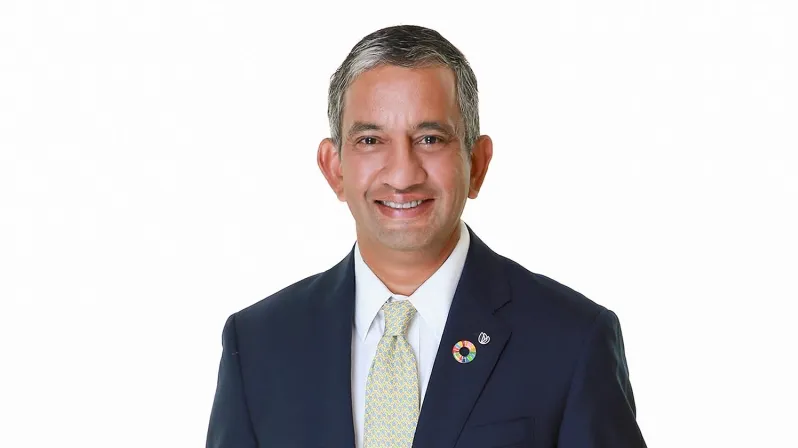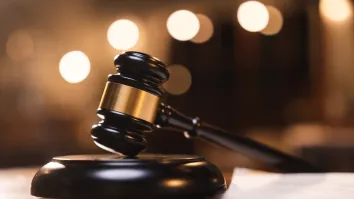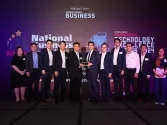
Where to put big batteries within Australia’s ‘skinny grid’
About 400km northwest of Brisbane stands a new 100MW battery energy storage.
In a market, where there is plenty of land and a “unique” power grid, developers are asked—where is a good place to build a battery?
In an interview with Asian Power, Vena Energy CEO Nitin Apte shared the company had two key considerations–good grid connection and strong demand–when it built the first utility-scale battery energy storage system (BESS) in Queensland. Nitin emphasized the need to be well-integrated into the community and the grid operators.
“When we look at locating our sites, we have to make sure that the communities that we work in are accepting these plans because these are assets that will be there for 20 or 25 years,” he said.

The Wandoan South BESS, one of the largest in Australia, stands 400-kilometre northwest of Brisbane in the Darling Downs region. It is connected to Powerlink’s Wandoan South Substation. The project, which has a 100-megawatt (MW) capacity, can store up to 150 megawatt-hours of energy, which is comparable to power about 57,000 households in Australia per year.
Tell us about the Wandoan Southwest Battery Energy Storage System and what drove Vena energy in developing one of the largest BESS in Australia.
In Australia and generally, in markets where there is high renewable penetration, one of the aspects is renewable energy intermittency because you’re only producing solar energy during the day, you're only producing wind energy when the wind is blowing. To address intermittency, there is a need for storage where you can store the excess energy generated and dispatch it when there is increased demand or low levels of available generation. That’s the overarching reason why we're looking at batteries in general, in Australia, and across all our markets.
Australia has a higher penetration than some of the other jurisdictions that we operate in. We selected this location because of two reasons–one is, a battery should be located at a place where you have a good grid connection so that you can readily charge the battery at times when there is an excess generation, caused by low demand or high renewable generation. Rooftop solar and solar plants produce a lot of energy during the middle of the day and when coupled with existing baseload generators, exceeds demand. Instead of turning off the solar farms, this energy that is generated can be stored in the BESS and used when demand peaks, normally in the evenings when everybody gets home. This way we can dispatch the stored energy as required to meet the demand.
The second aspect is you want a location for the battery where there is also strong demand. It’s a combination of good connection and strong demand. While Wandoan is 400km from Brisbane, it's a location where there are newly installed CSG wells that utilise electricity driven compressors to transport the gas to Gladstone. Thus, there's is good demand in terms of electricity requirements.
We are also currently building the 168 MW Wandoan Solar Project, which is close to the Wandoan South Battery Energy Storage System, and there’s already a high-voltage electrical infrastructure being established at that location. We find that co-locating our solar plants and battery site allows them to utilise shared infrastructure where possible and optimises O&M cost.
How is this instrumental in the clean energy transition in Australia?
There is an increasing penetration of renewable energy in Australia and a battery or storage system, like ours, addresses both intermittencies as well as provides ancillary services to the grid, in terms of frequency control, and so forth. In general, Australia has an aging coal fleet and this is going to get retired over time. As those assets retire, there is an increasing requirement for solar, wind and offshore capacity to contribute to replacing coal over the next 15 or 20 years. This transition is why we need to establish not only new generation but also storage. The combination of renewable generation and storage facilities that can assist in profiling the generation to match the demand and provide network services is our strategy to accelerate this transition.
The way we think about the energy transition is it's a combination of technology, communities, and economics. We bring a breadth of technology to accelerate this transition. The second is that maintaining a good relationship with the community is extremely important and have community engagement teams in each of our countries. We actively engage with our communities to ensure they understand what we are proposing and work closely with them through development and construction to ensure that the project is beneficial to those communities. There’s good alignment between what the community wants, and what Vena Energy is delivering. Of course, at the end of the day, this transition will continue as long as the economy supports it. We’re constantly looking at different approaches to financing and minimising capital costs to meet the expectations of the energy market and of our shareholders.
How is Australia performing in terms of the BESS development? What are the challenges that you see that will likely emerge in the market?
In terms of federal regulations as well as state regulations, there is a strong desire and consumer appetite for renewable energy. We have a very strong pipeline in Australia and we are constructing the 167 MW solar plant in Wandoan, as well as the second phase of our Tailem Bend Solar Project in South Australia. The Tailem Bend Solar Project is going to be co-located with our second battery project which is a 41.5MW one-hour storage battery. We are developing a hybrid grid where both the battery and solar farm have a single connection point. This is the first of its type in Australia.
I think Australia is performing quite well in terms of supporting the renewable transition. Just recently, there have been some announcements on offshore wind as well, in Victoria. This means there is recognition and a desire for renewable energy.
There’s plenty of land in Australia, growing demand, and good natural resources in general. I think, however, when we look at locating our projects, we have to ensure that the communities that we work in are supportive because these are assets that will be there for 20 years, 25 years. It needs to be well integrated into the community. That's always a factor that we consider. The second is that Australia has its own very unique grid. In bringing on renewable assets onto the grid, you need to work with the grid operators to make sure that your projects are well integrated into the grid. Getting assets onto the grid is something that must be done properly. We spend a lot of time preparing grid models and working closely with the grid operators to make sure that our projects are well accepted onto the grid.
Any new projects you have lined up in Australia?
We are very active in Australia, and we've got a development pipeline in Queensland, New South Wales, and South Australia where we have sites that are under development. Our strategy in general would be to build and co-locate renewable and battery storage in the future. I think that makes sense, but then we're also looking at stand-alone sites for the battery systems as well, depending on the grid requirements. We are currently developing an offshore wind project in Victoria called Blue Marlin.
What other Asian markets are you looking at to implement projects in support of their energy transition needs?
Vena Energy is a Pan Asia Pacific renewable company, and we operate in nine jurisdictions. We have over a gigawatt of projects currently under construction across the region.
We have been expanding across the Asia Pacific over the last several years, and we intend to continue driving that growth. We’re constantly looking at new markets to evaluate both the regulatory environment, the need for renewable energy, the economics, and to be able to evaluate those conditions, in order for us to decide whether we should go into new markets or not.
The way I would describe Vena Energy’s business is really our three pillars. One is our core, solar and onshore wind development, and renewable energy production. The second is offshore wind, because there is a great need, if you will, especially in markets where there is land scarcity such as North Asia, Taiwan, Korea, and Japan. Those markets are most suitable for offshore wind development. The third would be energy storage solutions to resolve the intermittency, as well as ancillary services to the local grids.
We talked a little bit about the battery earlier that I’ll call that stationary storage. Another aspect that will accelerate the energy transition is to be able to store and transport the energy generated from our renewable energy projects. Essentially, what that means is when you're able to produce energy in a location, and then transport that energy effectively to another location where there's demand. We have a project going on in Australia for hydrogen as a vector for carrying that energy.
In principle, you will use renewable power in places where there is a lot of lands and a low cost of energy, and we use that energy to produce green hydrogen. Hydrogen by itself is difficult to transport. Find a vector that you could, whether it's ammonia or some other chemical that you could combine that hydrogen with, and you could transport it to locations like Japan, where you would have that demand. I believe that Vena Energy is well positioned within Asia-Pacific with our portfolio of solar, onshore wind, offshore wind, and energy storage projects, and by adding green hydrogen storage that can be transported anywhere, we can accelerate the energy transition in the Asia-Pacific.








![Cross Domain [Manu + SBR + ABF + ABR + FMCG + HBR + ]](https://cmg-qa.s3.ap-southeast-1.amazonaws.com/s3fs-public/styles/exclusive_featured_article/public/2025-01/earth-3537401_1920_4.jpg.webp?itok=WaRpTJwE)
![Cross Domain [SBR + ABR]](https://cmg-qa.s3.ap-southeast-1.amazonaws.com/s3fs-public/styles/exclusive_featured_article/public/2025-01/pexels-jahoo-867092-2_1.jpg.webp?itok=o7MUL1oO)









 Advertise
Advertise


